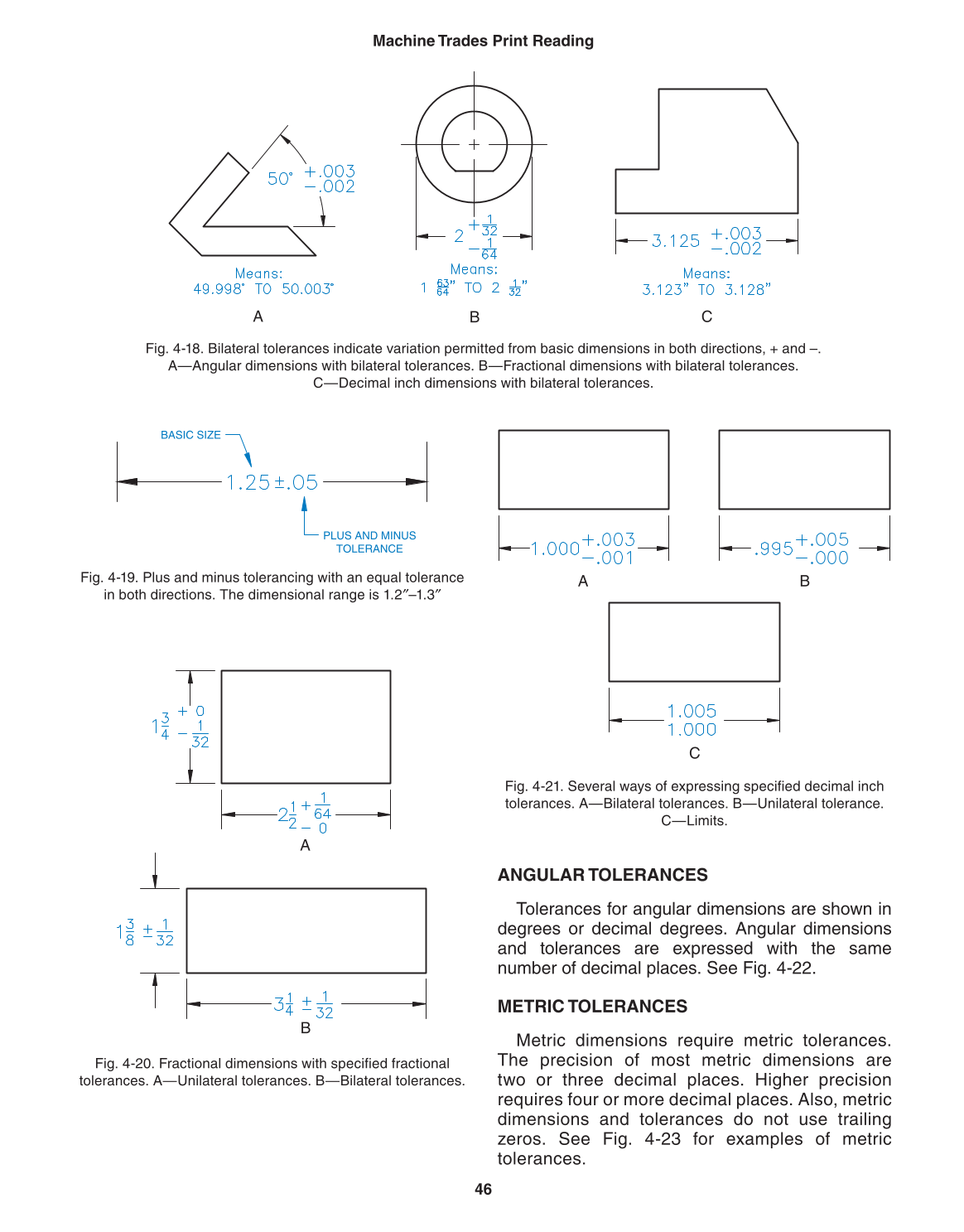46
Machine Trades Print Reading
ANGULAR TOLERANCES
Tolerances for angular dimensions are shown in
degrees or decimal degrees. Angular dimensions
and tolerances are expressed with the same
number of decimal places. See Fig. 4-22.
METRIC TOLERANCES
Metric dimensions require metric tolerances.
The precision of most metric dimensions are
two or three decimal places. Higher precision
requires four or more decimal places. Also, metric
dimensions and tolerances do not use trailing
zeros. See Fig. 4-23 for examples of metric
tolerances.
Fig. 4-18. Bilateral tolerances indicate variation permitted from basic dimensions in both directions, + and –.
A—Angular dimensions with bilateral tolerances. B—Fractional dimensions with bilateral tolerances.
C—Decimal inch dimensions with bilateral tolerances.
Fig. 4-19. Plus and minus tolerancing with an equal tolerance
in both directions. The dimensional range is 1.2″–1.3″
Fig. 4-21. Several ways of expressing specified decimal inch
tolerances. A—Bilateral tolerances. B—Unilateral tolerance.
C—Limits.
Fig. 4-20. Fractional dimensions with specified fractional
tolerances. A—Unilateral tolerances. B—Bilateral tolerances.
A
B C
PLUS AND MINUS
TOLERANCE
BASIC SIZE
A B
C
A
B
